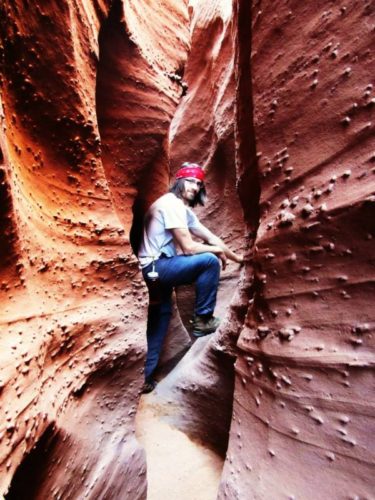
Catching Your First Wave in the Philippines
Adventure Is Calling

If you have a passion for the oceans, if you love exploring new places, if you crave thrill, surfing was made for you.

Meet the Author!
Devleena Dash: A writer by profession, I play with words to make a living, to survive. And then, I turn to mountains and waterfalls to come alive. On most days you’ll find me trekking, hiking, and jumping into all kinds of water bodies I come across. I love adventure sports and try out new ones whenever I can. When I am not trekking, I explore the city on my longboard, hang out with my fam and friends, write poetries, letters, read and cook.
Guide At a Glance
- Is this author an Adventurer?
- Is this Guide based on experience?
Your Next Quest
What you need to know before you go!
Gliding through white waters, with wind cutting through your hair is one of the most surreal experiences ever.
Skateboarding is a modified version of surfing. If you have ever done skateboarding, you know the thrill it brings. Surfing takes it to another level.
Surfing sets you free, it takes you through highs and lows quite literally. You can spot beautiful marine life, find corals, swim into sunsets, and have a personal connection with the water. A truly thrilling yet humbling experience.
The Philippines, known as the Pearl of the Orient Sea, boasts some of the best surfing locations in the Pacific Ocean. The country is located in southeast Asia, south of Taiwan and north of Indonesia. Manila is the capital city.
While some hot spots like Cloud 9 are best left for experts, the white sands and teal waters of the Philippine coastlines beckon to beginner swimmers with easy rollers, perfect barrels and swell factories. Beaches at Bagasbas and Zambales are perfect for aspiring surfers and vacationers.
Here’s how you go about it.
How do you go surfing?
Surfing is an adventure sport where a person, the surfer, uses a board (called a surfboard) to ride on waves of water.
Surfing comes with packed with Adrenaline rush and ecstatic feelings. Every wave has its own uniqueness and thus gives the surfers a new thrill with each new one. Surfing gives one the freedom to explore both the surface of water and the world under the water.
It is also said that being close to ocean boosts your mental stability and peace. When you’re in you’re riding on the back of the ocean, you truly feel like you’re on the top of the world.
People of ages can enjoy surfing. You only need to have the passion for the ocean. Many children are taught to surf from the ages of 5-10. Some take up the board in their 20s and some take it way later in life. But if you are starting out make sure:
- You know how to swim, especially against waves.
- Have an agile body and good reflexes and balance.
- Have no health concerns or ailments.
- Love the ocean!
If you check all these boxes, you’re good to go.
Teach me your ways!
- Before paddling into the sea learn the stance of surfing. You have to press the board under your chest and leap up to your feet. Make sure to keep your dominant foot in the front of the board
- Start out at less crowded spots.
- Attach the cord from the board to your ankle.
- Lay on your board chest-first and then paddle into the sea
- Once you see a wave, turn the nose of the board towards the shore.
- Don’t let the board get under the water.
- Begin Paddling towards the shore
- Once the wave starts nearing jump up onto the board and come into a standing position.
- Balance yourself and guide yourself through the waves.
Need some inspiration?
Desperate for some summer sun? This could be you!
Still undecided?
PROS
- Gives you a massive adrenaline rush.
- Strengthens your upper body, core and legs. It's basically a full-body workout.
- Get to explore new places and see new things.
- Individual sport, you don’t have to depend on anyone/team to enjoy this.
- Oceans are free, you don’t have to book places like a turf or field every time you want to surf.
- Good for your mental health.
CONS
- Prone to accidents with other surfers.
- Danger from Sharks, Jellyfish or other Marine animals.
- Surfing can get expensive.
- May have to buy own equipment, gear and boards.
- Having to carry large/heavy boards or equipment around.
- Can get really bad sunburns.
Inspire


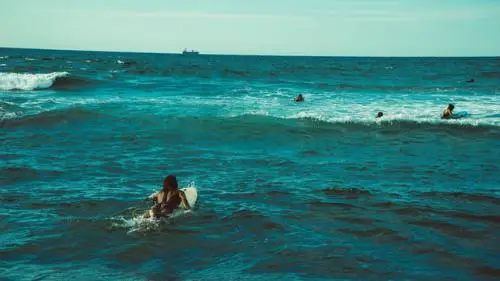
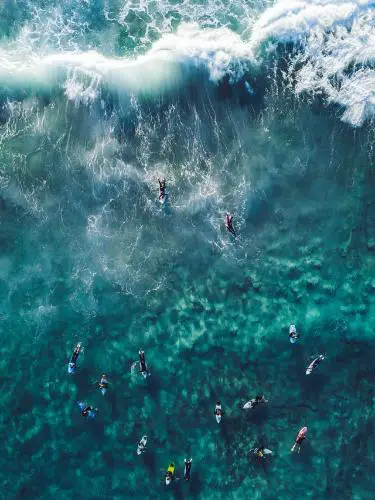
Where and When to Go?
Season
Great news! There is no bad time to surf in the Phillipines!
The peak season for surfing in the Philippines is August-November, when the waves come crashing at their maximum size thanks to late summer monsoons.
But for beginners, the early summer months are best. May tends to be the warmest month, with daily highs around 90 degrees Fahrenheit. Anytime of the year will be warm (or hot) and humid, since the Philippine archipelago has a tropical maritime climate.
Best season also varies by coastline. Ocean currents and prevailing winds change throughout the year.
Regions
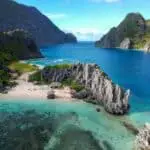
San Juan, La Union
San Juan is one of the most popular surfing spots in the Philippines. This spot has seen a massive turnout of surfers from all over the world. This place is apt for both beginners and experts. ‘The beach break’ spot is especially for beginners. You can practice there if you are a beginner or if you want coaching there are many surf camps across the beach. The best time for beginners to surf here is July to October.

Baras, Catanduanes
Already known as the ‘Happy Island’ you are bound to have a blast here. The Waves that break here are perfect for Beginner to intermediate level surfers. You can explore the place and find water pools, hidden lagoons, waterfalls and more. The best time to learn surfing here is from February-June. There aren’t many surfing camps here so make sure you have a surf instructor if you are starting out.

Bagbas Beach, Daet
This beach has endless waves coming one after the other so one has plenty of waves to get on and practice. Since these waves are strong and steady, the beach is perfect for beginners to learn surfing on. Best time to learn surfing here is from July to January.

Real, Quezon
Real, Quezon doesn’t have many tourist spots hence the crowd is really small here. This makes it a perfect place to learn surfing in. Surf season attracts many beginners to this place. Surfing with other beginners can boost your confidence and increase you scope to learn too. The best time to surf here is from October to February.

Baler, Aurora
This is the place where surfing first began in Philippines. To date, this place attracts lots of beginners and experienced surfers to explore its waves. Charlie’s point is the most popular spot here but you can go to Cemento too. There are surf instructors on the beach that can help you learn. The best time to learn surfing here is from March to October.
Essential Outdoor Skills
What outdoor and survival skills should I master before embarking?
- Ability to swim and breathe underwater.
- Knowledge of ocean currents and ability to read wave direction, height, intensity, etc.
- Knowledge of first aid in case of cuts, bruises, jellyfish bites, sea urchins, etc.
- Navigation in the sea if you want to explore new places.
Surfing Etiquette
Now that you know of the Do’s and Don’ts there are a few etiquettes you must follow in order to surf properly without hurting others.
Start here! Visit this link for beginner rules for surf ethics.
- Know ‘The right of way.” This means the surfer closest to the peak has the right to the wave. Don’t drop in!
- Do not cut in in front of surfers to get a wave; you can get both of you injured. Apologize if you do cut in or bump into someone by mistake.
- Be aware of your surroundings; help or call for help if you see anyone in danger.
- Be respectful of others. If someone is been waiting for a long time to get a wave, let them get it first.
- Never leave your board and learn how to paddle right. Stray boards can cause injuries to people.
- Respect the local people on the beach. Listen to them if they give you a warning or try to teach something. The same goes with your Surf Instructor. Be polite to them, understand what they have to say, and act accordingly.
- If you are first in the line-up and reach the waves first, be sure to leave waves for fellow surfers. Take turns while riding the waves. Enjoying together is the key.
- Know your abilities and surf in places that are suited according to your abilities. Trying to adventures in surfing where you’re not ready to can cause accidents.
- Make sure you do not litter or vandalize the beach in any way. Pick up after yourself and clean up the place before you leave for the day.
Numbers to remember
Safety & Risk
Is this adventure for you?
Surfing is a sport of balance, flexibility, and agility. One wrong move can prove injurious or fatal for you. Dangers include drowning, colliding with other surfers or surfboards, getting attacked by ocean creatures (sharks, Jellyfish, sea urchins), getting caught in high currents, etc.
The best way to prevent these accidents is to gather all the knowledge you can about the destination and being well prepared according to it. For additional safety always use a Surf Helmet, Surfboard Leash, wax, fins, Nose guard, earplugs, and a powerful sunscreen.
- Know how to escape a riptide!
- Never forget your tether.
- Don't forget the sunscreen.
DO'S
- Surf with a friend. Or friends.
- Don't go beyond the break into the swells.
- Pay attention to the incoming weather - and the wave conditions!
DONT'S!
- Let go of your board while in the waves, ever.
- Get in the way of other surfers. Learn the surfing right-of-way!
- Paddle inside a breaking point (a point where a lot of waves are crashing).
Wildlife
What animals can I expect to encounter?
Surfing is a great way to spot marine wildlife. From corals, to dolphins, fishes, sea plants, seals and more. These wildlife sightings change from destination to destination and will get more beautiful with every new place you visit. You can spot various endemic species and rare creatures too.
Though most of the creatures are harmless, surfing poses a risk with shark encounters, jellyfish bites, sea urchin attacks and a few more. Be very aware of the creatures in the destination you’re surfing in and take steps accordingly.



Fitness & Training
What is the recommended level of fitness?
Surfing uses the whole of your body. You should have a strong core, strong shoulder and strong legs to surf well. You should have the endurance to fight the waves, balance and be flexible enough to take quick steps.
Swimming is the basic and most important skill to learn for surfing. Beginners have to be able to swim in at least 50m deep water. Further as you advance, you should be able to swim in 200m deep water.
You should be able to swim continuously for at least 30 minutes without getting tired to be able to catch a good wave and ride it. Similarly for a successful surfing session you should be able to swim for around 1.5 to 2 miles continuously. Swimming less than this doesn’t exactly mean you can’t surf but you can only go for safer and smaller waves. Exceptional swimming is required for catching bigger waves and saving yourself from dangerous situations.
Training and preparation exercise regimen
You can start by 30-minute swimming sessions and slowly increase you time, speed and stamina. Just swimming for 30 minutes isn’t important, saving your breath and gaining your stamina for those 30 minutes is.
- Do squat jumps 5 sets of 5 reps. Squats 3 sets of 12 rep for core strength.
- You can train your legs and breath with 10 minutes of intense running. Run. Take a short break. Repeat.
- Apart from these, Chin-ups and Push-ups help shape your body for surfing too.
Pushups

Getting up on a surfboard requires a surprising amount of strength, particularly in the chest, triceps, and rear deltoid muscles.
Core Exercise

Balancing on a surfboard and swimming through swells requires a strong core! Leg lifts are better than crunches.
Swimming
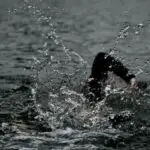
Paddling a surfboard is similar to a flat freestyle stroke. Spend some time in the water to become accustomed.
Gear Guide
What gear do I need for this trip?
Good news! As a beginner surfer, you don’t need to bring anything! You can rent all the necessary gear from local shops in the Philippines.
Required Gear
The primary gear for surfing includes a surf board, surfboard wax, fins, leash and wetsuit. For additional safety you can wear nose guards, earplugs and rash guards.
Supporting Gear
- Extra clothes
- Wet suit
- Towels
- Sunscreen
- Personal hygiene products
Accessories & Apps
Definitely carry a First-aid box!
Finances & Budget
What are the costs associated with this adventure?
Gear & Products
Price:
Even beginner surfers need surfing equipment and gears. surfing requires a surfboard, wetsuit (in cold weather), leash, wax and swim fins (opt). The basic gear can cost up to $700.
However, as a beginner surfer, you can rent all your gear! You can even pay for an hour of instruction as well. Renting a surf board for a day from Fat Lips in Siargao, for instance, costs less than $10 USD!
Food & Nutrition
Price:
There are cheap hotels and lots of street food at the beaches. Eat something very light before surfing, just so you don’t lose energy or faint. Having heavy meals before surfing can lead you to puking. You’re bound to be extremely hungry after a good session of surfing so dive in to the local cuisines for a hearty meal for affordable prices.
Transportation
Price:
If you’re flying out to another country, the flight tickets cost according to that country. Living near the beach cuts the cost of traveling completely. Beaches aren’t remote or hard to access so traveling takes comparatively lesser time than other adventures.
Airfare to the Philippines can be expensive from western countries, costing $1,000 per person or more. Flights from eastern countries, due to their closer proximity, cost quite a bit lessl.
- Automobile: Island only
- Airplane: Yes
- Boat: Yes
- Horse: No
- Train: No
- Bus/Shuttle: No
- Dragon: Transportation by dragon not available for this area.
Accommodations
Price:
Accommodation ranges from hostels to Villas, choose your accommodation according to your budget and one preferably near to the beach.
The Philippines boast an array of hostels, resorts and hostels on all the major islands. The hostels are beautiful and cost as little as $15-$20 a night!
- Camping: Rarely
- Hotels: Yes
- Boat: Yes
- Friends: Yes!
Miscellaneous
Since most beaches are free there shouldn’t be any extra costs except if you’re trying to get into lesson, competition or a private beach.
Savings Tips
- You can start off by taking surfing lessons than learning surfing yourself. Lessons cost lesser than buying and maintaining equipment and they provide you with all safety gears and board. So, you can surf and save while in the beginner stage and get your own equipment as you advance.
- Buying second-hand gear and equipment can save you a lot of costs.
- Many beaches give out gear and boards for rent. Renting one out can help you cut down on costs.
Insider Tips
Here's what most people don't know!
- There are many kinds of Surfboards. Shortboards, longboards, fish boards, fun boards and guns. All these boards are designed different and glide differently in water. Be careful about choosing your board. It can enhance your surfing experience.
- Bending your knees provides much better balance.
- Turning your head and looking where you want to go makes the maneuvering of the board much easier!
What does no one tell you?
Falling face-forward off the board is called “diving for pearls.” It will happen to you! Don’t despair. Just blow the water out of your nose, slide back on your board and try again. You’ll get the hang of it!


FAQ
Yes, surfing is for everyone. From little kids to middle-aged adults, everyone can enjoy surfing. If your family has a passion for the ocean, you all can have a great time together.
No, people of all ages can learn and do surfing. You should be active and mobile before attempting surfing, particularly in waves taller than 2-3 ft.
Most beaches have washroom facilities. If you feel the need to urinate while in the waves and there’s no way out, you can go in the suit itself. Later soak it in detergent and hot water to get to properly sanitize the suit.
See Notes on transportation in the Finances & Budget section.
See notes in the “Where and When to Go?” section.
Yes, there are plenty of lessons available. You can even find many of them on popular surfing spots.


